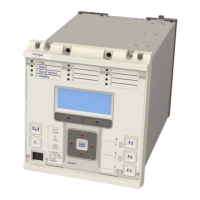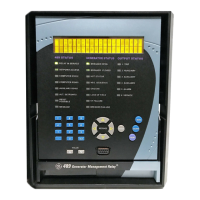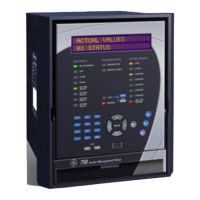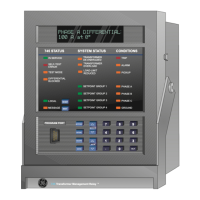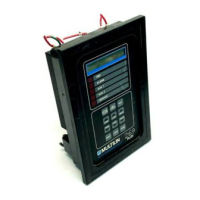Z
T
is the total system positive sequence impedance equal to Z
S
+ Z
L
+ Z
R
, where Z
S
and Z
R
are the equivalent
positive sequence impedances at the sending and receiving ends and Z
L
is the positive sequence line impedance.
θ is the angular difference between the voltages at the sending and receiving ends beyond which no system
recovery is possible.
To determine the settings for OST, the minimum inner resistive reach of OST R5 (R5min) needs to be calculated.
The figure above shows that:
R5min = (Z
T
/2) / tan(θ/2
Next the maximum (limit value) for the outer resistive reach OST R6 (R6 max) needs to be calculated. Referring to
the figure below, point A must not overlap with the load area for the worst assumed power factor of 0.85 and the
lowest possible Z
T
angle α.
V02764
Zone 6
Resistive forward (+R)
Resistive reverse (R’)
α
OST Z6
OST Z6'
OST R6
OST R6'
+jX
Z
T
β
32°O
A
LOAD
Figure 130: OST R6max determination
β = 32 + 90 – α
Z load min = OA
Where:
● Z load min is the minimum load impedance radius
● 32º is the load angle that corresponds to the lower power factor of 0.85
● α is the load blinder angle (Blinder Angle) that matches the Z
T
angle
Therefore:
R6max < Z load min(Cos β)
Starting from the limit values R5min and R6max, the actual OST R5 and OST R6 reaches will be set in conjunction
with the Delta T setting.
P446SV Chapter 10 - Power Swing Functions
P446SV-TM-EN-1 245
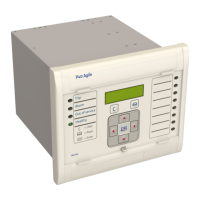
